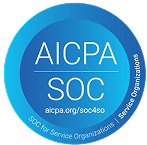How to Maximize Financial Aid for a Master’s Degree in the U.S.
Earning a master’s degree in the U.S. remains a popular pursuit among international students. According to the Institute of International Education’s (IIE) 2024 Open Doors Report, the number of international students enrolled in a master’s program during the 2023-2024 school year increased by 8.3%, compared to the prior year.
Although a master’s degree is the most sought after graduate level among students, the cost necessary to complete your education can be an obstacle. If you’re curious about where to find financial aid for international students’ master’s programs, here’s what to know.
How can I get my master’s if I can’t afford it?
As an international student, you’re ineligible for federal financial aid. The IIE reports that 54.5% of international students primarily used personal and family funds to pay for a U.S. education. However, not everyone has the means to pay for a postgraduate program out of their own pocket.
If you find yourself in a similar situation, here’s how to maximize financial aid as you study toward a master’s degree in the U.S.
1. Explore university-sponsored scholarships and grants
Some colleges and universities offer institution-based financial aid in the form of scholarships and grants. This type of student aid can be awarded based on academic merit or financial need. Scholarships and grants are also considered gift aid and don’t need to be repaid.
Eligibility criteria varies between scholarships and grants. Some examples might include a minimum GPA requirement and letter of recommendation. In addition to exploring the institution’s scholarships and grants for international students, ask your academic department whether it sponsors scholarships for students enrolled in its programs.
Some of these financial aid opportunities have limited awards so applying early is a wise strategy.
2. Research external scholarships and fellowships
Additional access to scholarships is available through third-party sources, like private organizations, professional associations and nonprofit groups. External scholarships might be based on academic excellence, financial need or other specific criteria like studying in STEM. See the valuable scholarships available to MPOWER students.
Fellowships are another valuable source of financial aid for postgraduate international students who are pursuing their master’s degree. A fellowship involves research or training that aligns with the student’s academic or professional pursuits. Programs can be highly competitive, offering a stipend, tuition and travel expenses. Students participating in a fellowship might also have additional requirements to fulfill, like a teaching requirement or publishing a research project.
3. Consider graduate assistantships
Universities often provide graduate assistantships and require part-time work in exchange for a partial tuition waiver, or tuition credit, and stipend. These opportunities can be a teaching, research or administrative assistantship, though the latter is not very common.
You’ll assist a professor or university administrator with tasks such as grading, leading class discussions or other clerical support that’s within your academic department. This gives students an opportunity to get hands-on experience and mentorship during the school session.
Typically, students must have met minimum requirements for assistantship eligibility, such as having a certain number of credit hours completed.
4. Leverage funds from home country sources
Research the funding options provided by your home country as early as possible. Inquire whether your home government offers scholarships or subsidized education student loans to its citizens studying abroad.
If you’re already employed back home and are pursuing a master’s degree to advance your career and skills, your employer might offer a financial assistance program to its employees. Also, explore funding options for international studies through independent organizations, like nonprofit groups.
5. Seek out international student loans
Some students find that, despite exhausting all other funding possibilities, they don’t have enough financial resources for their master’s degree. No-cosigner private student loans can offer the aid you need to avoid disrupting your studies.
Some lenders, like MPOWER Financing, don’t require a cosigner to qualify for an international student loan. A cosigner is an U.S.-based individual who has good credit and is included in the student loan agreement as a back-up payer if you don’t repay the loan.
How much money can I borrow for a master’s degree?
How much you can borrow with an education student loan depends on your qualifications, like your earning potential, and varies between lenders. As an example, MPOWER Financing offers fixed-rate international student loans from US$2,001 to US$100,000.
6. Budget living expenses in the U.S. wisely
Another way to stretch any financial aid awards you’ve received is to keep your expenses low while studying for your master’s degree in the U.S. The cost of living in the U.S. varies widely, depending on which city and state your school is located.
Find ways to reduce costs for recurring expenses, like housing, transportation, food and other essentials. Through your university ID, for example, you might get a student discount on a computer, public transportation pass and entertainment.
Housing is a significant cost to consider, too. If you’ve decided to live off campus, research the surrounding neighborhoods near school to find an apartment that’s safe yet affordable. A common strategy is sharing housing costs – including monthly rent and utilities – among one or more roommates.
Combining funding options toward a master’s degree
There’s no rule that says financial aid for an international student master’s program has to come from one source. Diversifying your financial aid by piecing together two or more of the funding options described above can help you pay for your postgraduate education goals.

